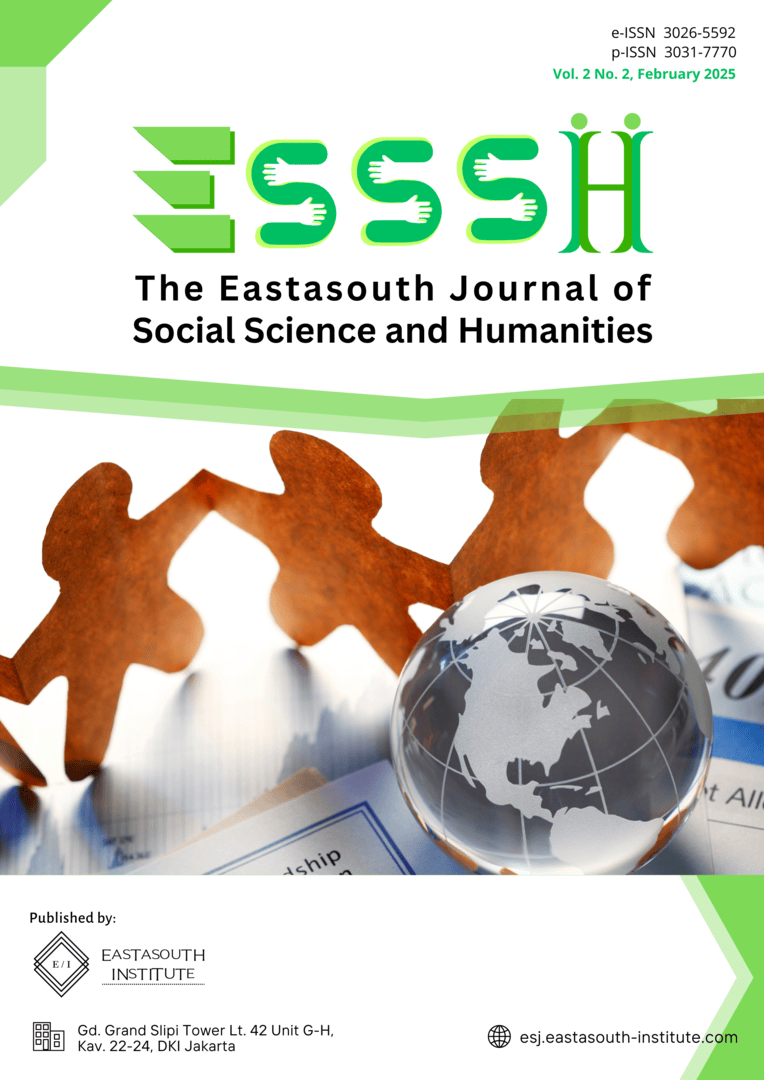Bibliometrics of Social Mobility Studies in the Digital Age
Main Article Content
Abstract
This bibliometric study explores the evolution and thematic landscapes of social mobility research within the digital age, drawing on an extensive dataset derived from the Scopus database from 2000 to 2025. We conducted a comprehensive analysis to identify significant trends, collaboration patterns, and emerging themes in the literature. Our findings highlight the enduring relevance of traditional factors such as education, income, and occupation in discussions of social mobility, while also pointing to the growing importance of digital literacy and access. The study reveals a dynamic field characterized by robust international collaborations, with a notable increase in contributions from non-Western countries. Additionally, the analysis suggests significant gaps, particularly concerning the long-term effects of digital technologies on social mobility and the integration of mental health factors. These insights are crucial for informing policy and future research directions, ensuring that advancements in digital technology foster rather than hinder social mobility.
Article Details

This work is licensed under a Creative Commons Attribution-ShareAlike 4.0 International License.
References
D.-G. Ilie, R.-A. Neghină, V. M. Mănescu, M.-R. Ganciu, and G. Militaru, “New media, old problems: Social stratification, social mobility and technology usage,” in INTED2020 Proceedings, IATED, 2020, pp. 6319–6326.
S. Livingstone and J. Sefton-Green, The class: Living and learning in the digital age. New York University Press, 2016.
I. Boas, “Environmental change and human mobility in the digital age,” Geoforum, vol. 85, pp. 153–156, 2017.
M. Pitcan, A. E. Marwick, and D. Boyd, “Performing a vanilla self: Respectability politics, social class, and the digital world,” J. Comput. Commun., vol. 23, no. 3, pp. 163–179, 2018.
M. Nico, “Identity and change of a field: A literature analysis of the concept of social mobility,” Soc. Sci. Inf., vol. 60, no. 3, pp. 457–478, 2021.
N. Martindale and V. Lehdonvirta, “Can labour market digitalization increase social mobility? Evidence from a European survey of online platform workers,” 2021.
R. Eynon, U. Deetjen, and L.-E. Malmberg, “Moving on up in the information society? A longitudinal analysis of the relationship between Internet use and social class mobility in Britain,” Inf. Soc., vol. 34, no. 5, pp. 316–327, 2018.
P. Brown, D. Reay, and C. Vincent, “Education and social mobility,” British Journal of Sociology of Education, vol. 34, no. 5–6. Taylor & Francis, pp. 637–643, 2013.
R. Breen and W. Müller, “Social Mobility and Education in the Twentieth Century,” in Education and intergenerational social mobility in Europe and the United States, Stanford University Press Stanford, 2020, pp. 1–19.
S. Lipset, Social mobility in industrial society. Routledge, 2018.
S. Alm, “Downward social mobility across generations: the role of parental mobility and education,” Sociol. Res. Online, vol. 16, no. 3, pp. 1–14, 2011.
P. A. Mitnik, E. Cumberworth, and D. B. Grusky, “Social mobility in a high-inequality regime,” Ann. Am. Acad. Pol. Soc. Sci., vol. 663, no. 1, pp. 140–184, 2016.
L. Folkes, “Re-imagining social mobility: The role of relationality, social class and place in qualitative constructions of mobility,” Sociol. Res. Online, vol. 27, no. 1, pp. 136–153, 2022.
J. Clayton and S. J. Macdonald, “The limits of technology: Social class, occupation and digital inclusion in the city of Sunderland, England,” Information, Commun. Soc., vol. 16, no. 6, pp. 945–966, 2013.
A. L. Strauss, The contexts of social mobility: Ideology and theory. Routledge, 2017.
J. H. Goldthorpe, “Progress in sociology: The case of social mobility research,” Anal. Inequal. Life chances Soc. Mobil. Comp. Perspect., vol. 71, p. 56, 2005.
M. S. Granovetter, “The strength of weak ties,” Am. J. Sociol., vol. 78, no. 6, pp. 1360–1380, 1973.
L. P. Fried et al., “Frailty in older adults: evidence for a phenotype,” Journals Gerontol. Ser. A Biol. Sci. Med. Sci., vol. 56, no. 3, pp. M146–M157, 2001.
A. Appadurai, “Disjuncture and Difference in the Global Cultural Economy,” Glob. Cult. Natl. Glob. Mod. Publ., 1990.
J. Scott, What is social network analysis? Bloomsbury Academic, 2012.
H. M. Blalock Jr and W. L. Hansen, “The American occupational structure.,” Am. Sociol. Rev., vol. 33, no. 2, 1968.
M. Sheller and J. Urry, “The new mobilities paradigm,” Environ. Plan. A, vol. 38, no. 2, pp. 207–226, 2006.
R. J. Sampson and W. B. Groves, “Community structure and crime: Testing social-disorganization theory,” Am. J. Sociol., vol. 94, no. 4, pp. 774–802, 1989.
M. Granovetter, Getting a job: A study of contacts and careers. University of Chicago press, 2018.
R. Li et al., “Substantial undocumented infection facilitates the rapid dissemination of novel coronavirus (SARS-CoV-2),” Science (80-. )., vol. 368, no. 6490, pp. 489–493, 2020.
S. Gössling, D. Scott, and C. M. Hall, “Pandemics, tourism and global change: a rapid assessment of COVID-19,” J. Sustain. Tour., vol. 29, no. 1, pp. 1–20, 2020.

